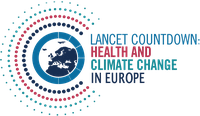All official European Union website addresses are in the europa.eu domain.
See all EU institutions and bodiesDescription

Climatic conditions across Europe are becoming more suitable for emergence and transmission of climate‑sensitive infectious diseases. Dengue is a viral disease transmitted by Aedes aegypti and Aedes albopictus (tiger mosquito) mosquitoes. Aedes albopictus is present in Europe and is expanding its territory. Besides more global travel, climate change can be a driver of dengue emergence in Europe since shifts in temperature and precipitation make the region’s climate more suitable for the transmission of dengue.
One way of measuring the health threats associated with dengue under the changing climate is to estimate the changes in the basic reproduction rate (R0) associated with climatic conditions), hence estimating the expected number of secondary infections from one infectious case in a completely susceptible population. If R0 is higher than 1, outbreaks have the potential to grow. The higher R0 is, the faster the outbreak will grow.
Caveats
Key caveats and limitations of the V model and its parameterisation are fully described by Liu-Helmersson et al. (2014, 2016) and Rocklöv et al. (2019). The predicted R0 should not be confused with actual dengue cases, although it is an indicator of the potential for outbreaks.
Reference information
Websites:
Source:
Publication:
van Daalen, K. R., et al., 2022, ‘The 2022 Europe report of the Lancet Countdown on health and climate change: towards a climate resilient future’, The Lancet Public Health 7(11), pp. E942-E965. doi: 10.1016/S2468-2667(22)00197-9.
Data sources:
- Climatic data: ECMWF ERA5 Land Reanalysis data, retrieved from the Copernicus Climate Change Service Climate Data Store
- Population data: hybrid gridded data combining:
- NASA-SEDAC Gridded Population of the World (GPW) v4
- ISIMIP historic and future annual global gridded population data
Additional reading:
- Rocklöv, J., and Tozan, Y., 2019, Climate change and the rising infectiousness of dengue, Emerging Topics in Life Sciences 3(2), 133-142. https://doi.org/10.1042%2FETLS20180123
- DiSera, L., et al., 2020, The mosquito, the virus, the climate: an unforeseen reunion in 2018, Geohealth 4(8), e2020GH000253. https://doi.org/10.1029/2020GH000253
- Colón-González, F. J., et al., 2021, Projecting the risk of mosquito-borne diseases in a warmer and more populated world: a multi-model, multi-scenario intercomparison modelling study, The Lancet Planetary Health 5(7), e404-e414. https://doi.org/10.1016/S2542-5196(21)00132-7
- Murray, K. A., et al., 2020, Tracking infectious diseases in a warming world, BMJ 371, m3086. https://doi.org/10.1136/bmj.m3086
Contributor:
Lancet Countdown in EuropePublished in Climate-ADAPT: Jan 20, 2021
Language preference detected
Do you want to see the page translated into ?

